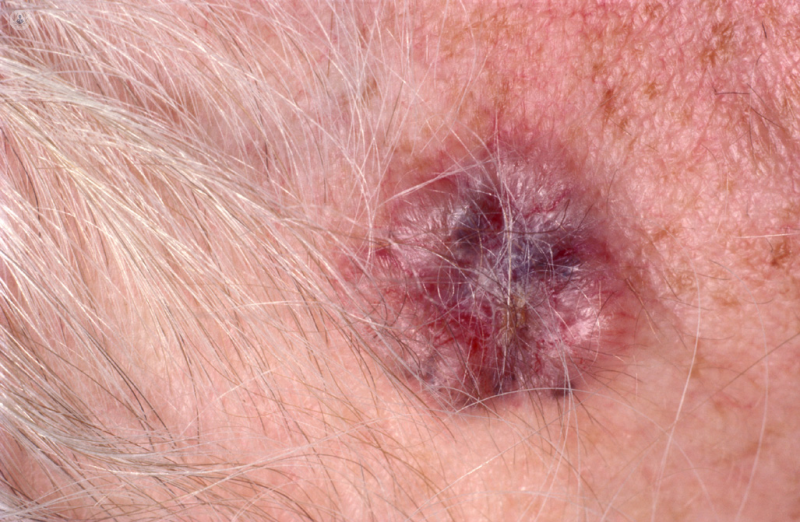Spotting the signs of basal cell carcinoma (BCC)
Autore:It is the most common type of skin cancer – but it can be fiendishly difficult to detect, because there is no “one” way it should look. In fact, there are over 20 growth patterns, some of which are hard to distinguish from an ordinary rash or spot. We asked leading London dermatologist Dr Raj Mallipeddi to explain the different types of basal cell carcinoma, what they can look like, and when you should see a doctor.

What is basal cell carcinoma? Is it serious?
Basal cell carcinoma is a low-grade form of skin cancer which generally does not spread beyond the skin and is very rarely a threat to life. However, people with basal cell carcinoma often have characteristics such as fair skin and sun exposure which also makes them more prone to developing other forms of skin cancer including squamous cell carcinoma and melanoma. Sometimes the growth can interfere with sensitive nearby areas such as the eyelids, nose, ears or lips.
What kind of skin changes could be a sign of basal cell carcinoma?
Different subtypes of basal cell carcinoma can present with varying signs and often co-exist:
Superficial
Here the growth is only on the top layer of the skin known as the epidermis, and there are no bumps or lumps on the skin. It can feel somewhat scaly, and sometimes you can have microerosions. This subtype is sometimes confused with eczema.
Nodular
They tend to be shiny (“pearly”) and smooth with a small depression in the middle. When they are pigmented they can be confused with melanoma. The micronodular variety can look similar on the skin but under the microscope the cells can spread more extensively when compared to nodular BCC.

Infiltrative
These tend to grow on the face and may extend both more widely and deeply into the skin than is evident from merely looking with the naked eye. The morphoeic variety can be the most difficult growth to detect, because they sometimes look extremely similar to a scar.
Basosquamous carcinoma
A potentially more aggressive variant which has features of both basal cell carcinoma and squamous cell carcinoma (another type of skin cancer).
Who should I see?
If you are worried about something on your skin, try and see your GP in the first instance, and if possible, a specialist dermatologist.
Why is it important to get a diagnosis?
It is important to get any kind of skin cancer treated, but accurate diagnosis is essential because the right treatment depends on what type of basal cell carcinoma you have. For some types, cream or other non-surgical therapies will be sufficient, whereas for others surgery may be necessary. Treatment is usually effective – 80-99% of growths are successfully cured.
Obtaining a diagnosis as early as you can is ideal. Even if a growth looks innocuous, this is no indication of how aggressively it will develop. With an early diagnosis, you may be able to avoid more invasive treatments and preserve your skin as much as possible.
What advances in treatment do you think we’ll see in the future?
We have already come a long way, but I expect we will see a wider variety of non-surgical options in the future. These treatments will hopefully be effective in treating types of basal cell carcinoma that previously needed to be removed with surgery.

